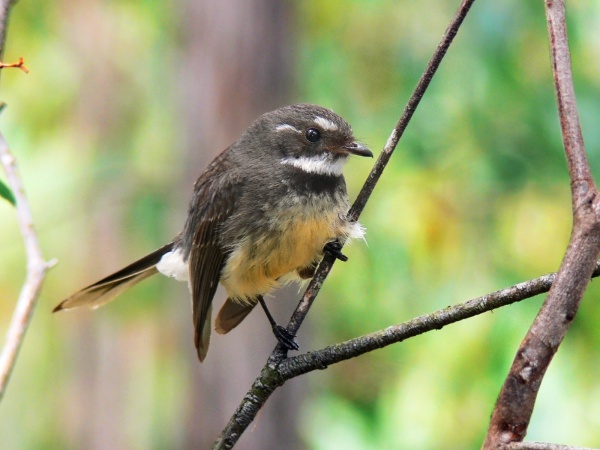Facts About Fantail
Fantails are enchanting little birds that inhabit regions such as Australasia, Southeast Asia, and the Indian subcontinent. Classified in the genus Rhipidura within the Rhipiduridae family, these birds are skilled at catching insects in mid-air. However, the Australian willie wagtail deviates from this norm as it also hunts for food on the ground.
Fantails are easily recognizable due to their small size, long tails, and distinctive hunched posture with drooping wings. Their tapered wings afford them exceptional agility, ideal for capturing insect prey.
Fantails exhibit remarkable adaptability, thriving in diverse environments ranging from lush rainforests to arid deserts and bustling urban areas. While some species remain in one location year-round, others migrate according to the seasons. Their diet primarily consists of small insects and invertebrates, and they employ various hunting techniques including static searching (remaining still and waiting) and progressive searching (actively pursuing food). Notably, they occasionally collaborate with other species to locate their next meal.
In terms of breeding, fantails display strong parental collaboration. Both parents participate in defending their territory, constructing the nest, and rearing the chicks. Their nests are small, cup-shaped structures crafted from grass stems and bound together with spider silk. Despite facing challenges such as low nesting success, they endeavor to protect their young using distraction tactics to deter predators.
The fantail family is diverse, comprising numerous species dispersed across Australasia and Southeast Asia. These vibrant birds are celebrated for their acrobatic flight and the unique fan-shaped displays of their tails. While they share many common behaviors, some species have evolved specific adaptations to suit their unique habitats. Prominent species include the grey fantail, white-throated fantail, and the willie wagtail. Over time, some species formerly classified within the Rhipidura genus have been reclassified into other groups.
So, the next time you observe a small bird darting through the air with a fan-like tail, you're likely witnessing a fantail in action!
